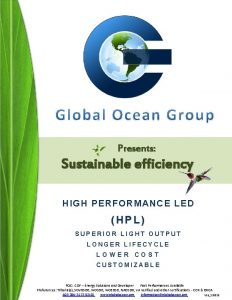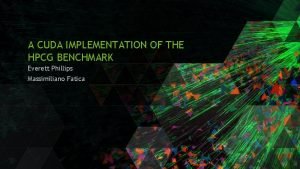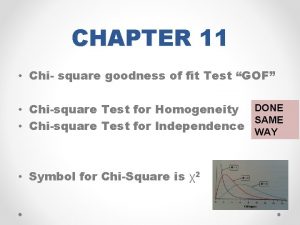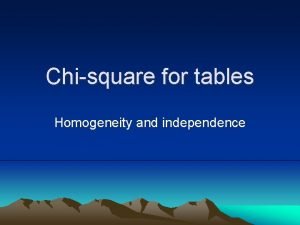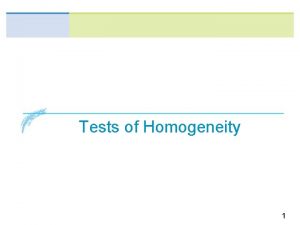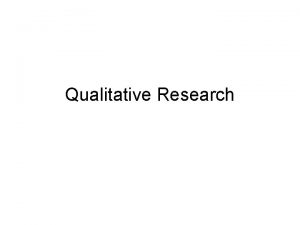Transparency and homogeneity of HPL A quick qualitative









- Slides: 9

Transparency and homogeneity of HPL A quick qualitative look Ian 6 Jan 2019

How did it come about to look at the transparency of HPL panels ? The sun is low in the winter and in this area with the Jura mountains in the West it is rare to have the sun rays so low. By chance it was observed that a piece of HPL left outside was not completely opaque to the sun light even in the evening an hour or so before sun set. What follows are some different views of the same panel, 1656 mm x 902 mm. That appear to be a type 2 of perhaps RE 4 SM production The photos are all time stamped to help understand any changing light conditions.

Inside Lighting is important. On the left is a photo of the HPL panel taken with flash On the right is the same panel with no flash There are 2 vertical (or longitudinal) streaks on the surface that are darker than the rest Notice the yellow tape in the bottom LH corner.

Outside. The panel is exposed to the sun. Again the two vertical streaks but perhaps less visible. Rack uprights The panel has been turned about its horizontal transverse axis and is seen from “behind” looking towards the sun. Here the two vertical members of the rack are quite visible through the HPL.

Again looking towards the sun. On the left the panel is exposed and the two streaks, now horizontal are visible. On the right the panel is outside but in the shadow of the building. Again the two horizontal streaks are visible with lighter areas on each side and between. Red (LHS) corresponds to dark (RHS)

Reflections from the HPL , due to their high gloss, pose a problem in obtaining photos that clearly show the different colour grades across the panel. A black cloth was hung downstream of the HPL in an attempt to cut out reflections but was insufficient in size and anyway the camera and operator are still there !

The rack frame is visible as a vertical dark line. The yellow tape is in the top left corner, mentioned earlier. The two red streaks are horizontal (longitudinal). Interestingly the lighter areas are also visible, normally they appear more predominantly with incident light. The reflection of the black cloth material is indicated. Black cloth material

The sun has almost gone below the horizon

Some questions……… What does the redness in the exposed panel represent ? Is it more/excess Phenolic resin ? Colour intensity is an “X-ray” view through the panel indicating different composition ? It is not only the surface that shows differences of hue. The lighter areas of the unexposed panel are indicating a higher paper cellulose concentration wrt the phenolic ? If the above is true then how can this be explained ? The sheets of kraft paper come through a bath of phenolic resin and so could have some parallel patterns along the direction of production, is the case ? Is this a tool to look for homogeneity across the panel ? The resistivity should be measured to look for correlation wrt the colour distribution Transmitted light intensity may be used to compare panel to panel. Older HPL panels should be looked at.
